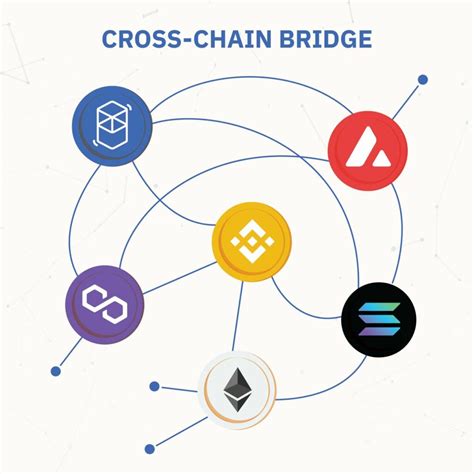CRYPTOCURRENCY
Cross Chain Solutions: Expanding Your Crypto Horizons
Cross Chain Solutions: Expanding Your Crypto Horizons
The world of cryptocurrencies has experienced rapid growth and evolution in recent years, with new technologies and protocols emerging to disrupt the traditional payment system. One area that continues to be highly innovative is cross-chain solutions, which enable seamless interactions between different blockchain networks.
In this article, we’ll delve into what cross chain solutions are, how they work, and why they’re becoming increasingly important for crypto enthusiasts and investors alike.
What are Cross Chain Solutions?
Cross-chain solutions refer to the ability to transfer value or assets across different blockchain networks without having to switch between them. This is achieved through the use of specialized technologies that allow data and assets to be bridged from one network to another, bypassing traditional payment systems like fiat currencies and central banks.
How do Cross Chain Solutions Work?
Cross chain solutions typically involve two main components:
- Decentralized Application (dApp) bridges: These are software programs that enable dApps to interact with different blockchain networks without having to be built from scratch.
- Interoperability protocols: These are rules-based systems that govern how data and assets can be transferred between different blockchain networks.
When a user wants to transfer value across multiple blockchain networks, they need an interoperability protocol to guide the process. This protocol determines whether the transfer is allowed and what conditions must be met in order for it to succeed.
Examples of Cross Chain Solutions
Several examples of cross chain solutions have already been developed or are under development:
- KuCoin’s Cross Chain Solution: KuCoin, a popular cryptocurrency exchange, has partnered with several blockchain networks, including the EOS and Binance Smart Chain, to enable seamless trading.
- OpenChain: OpenChain is an open-source framework that allows developers to build dApps that can interact with multiple blockchain networks. The project has already achieved significant adoption among decentralized finance (DeFi) applications.
- Chainlink’s Oracles: Chainlink, a popular oracle network, provides real-world data to DeFi applications without requiring users to switch between different blockchain networks.
Benefits of Cross Chain Solutions
The benefits of cross chain solutions are numerous:
- Increased Accessibility: By allowing value and assets to be transferred across multiple blockchain networks, cross-chain solutions increase accessibility for a broader range of users.
- Improved Security

: Interoperability protocols help reduce the risk of data breaches by ensuring that sensitive information remains secure regardless of which network it’s on.
- Enhanced Trust: By reducing reliance on traditional payment systems, cross chain solutions promote trust and transparency among users.
Challenges Ahead
Despite their potential benefits, cross chain solutions also face several challenges:
- Scalability: As the number of transactions increases, cross chain solutions must be able to scale efficiently to prevent congestion or delays.
- Regulatory Uncertainty: The regulatory landscape for cross chain solutions is still evolving and uncertain in many jurisdictions.
- Interoperability Complexity: Integrating multiple blockchain networks can be complex, requiring significant expertise and resources.
Conclusion
Cross chain solutions have the potential to revolutionize the way we think about cryptocurrency payments, enabling seamless interactions between different blockchain networks. As the ecosystem continues to evolve, we can expect to see more innovative solutions emerge.
Intersection Intersection Psychology Action
